
International Development
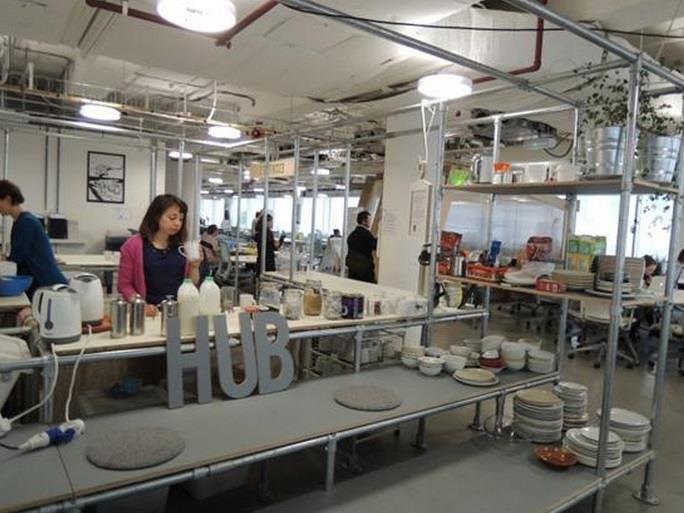
UK Social Enterprise Report:The Hub Westminster
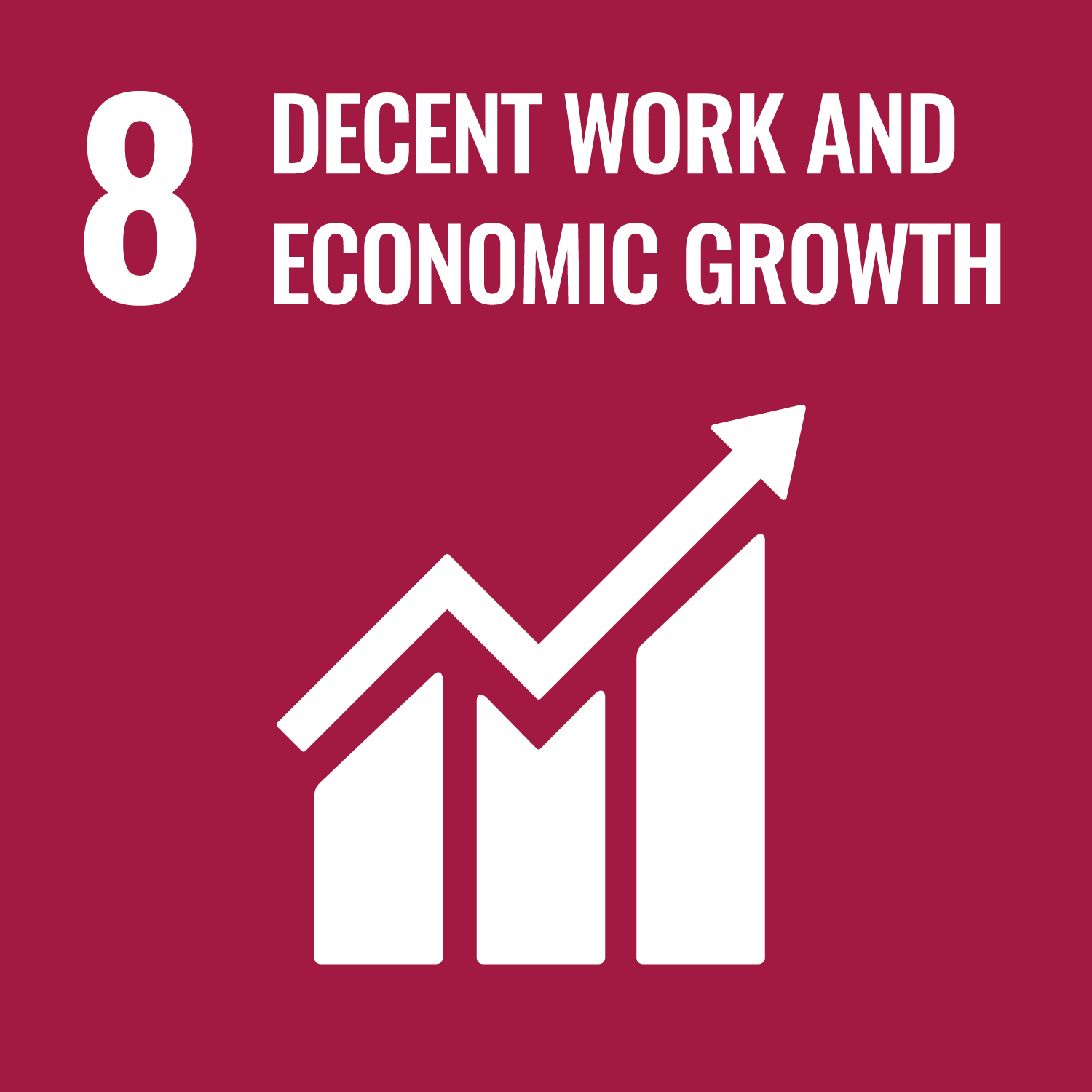
UK social enterprise report: The Hub Westminster
Introduction
The Hub is a globally renowned chain co-working space. In 2013, after discussions among various management teams and members, it was decided to place more emphasis on the characteristic of gathering like-minded people to create impact in order to distinguish itself from other co-working spaces; therefore, it was renamed The Impact Hub. On its website, it clearly reads, “We are an innovation lab, industry incubation center and social enterprise community center. This is a global community spanning across five major continents with over 7,000 members offering diverse resources, creativities and cooperative opportunities in order to help develop and expand your business and influence.”
The Impact Hub operates 45 locations worldwide including Asian countries such as Singapore, South Korea (Seoul) and China (Shanghai) are under planning. In Hong Kong, there is The GoodLab, which was created by using The Impact Hub as reference. We also visited The Impact Hub Singapore in Singapore in 2012.
Co-working Space is a form of entrepreneurial settlement that is currently in vogue overseas. It brings together entrepreneurs or teams to share resources, thereby lowering the barrier to entry for entrepreneurship and creating diversified community environment to stimulate innovation and crossover collaborations. Besides social enterprises, there are numerous types of co-working spaces with different themes such as art, culture, technology or cultural & creative. In Taiwan, International Entrepreneurship Hub (IEH) formed by the Research and Innovation-Incubation Center of National Chengchi University has also introduced the co-working space concept. In the private sector, examples include CLBC, Changee, Custard Cream and Happen, while the government is represented by Taipei Co-Space, etc. (new co-working spaces are constantly being created)
Visit summary
Hub Westminster is located in London’s political and financial central district on the second floor of the New Zealand House. At the entrance there is a three-story tall totem pole, which is – if I am not mistaken – the cultural asset of the Maori. After BII CEO Nigel introduced us, co-founder Alice Fung showed us around while explaining various spatial arrangement and design philosophies to us. Alice is an architect who founded the architecture firm 00/:(zero zero) at the Hub Islington in London. Alice perceive the needs of the community or businesses through architecture projects, and together with her entrepreneurial experiences in Hub Islington and in the development of Hub Kings Cross, Hub Westminster was conceived as a result.
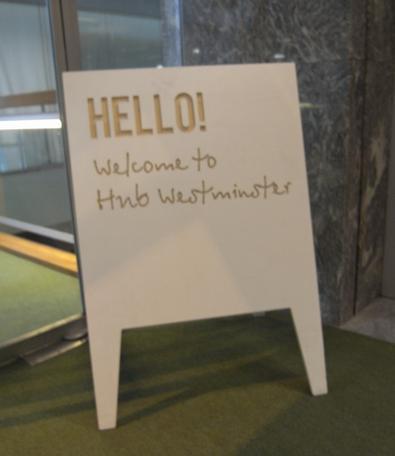
Space creation
If you look up “New Zealand House” on Wikipedia, you will see that the second floor of the building is a space surrounded by glass walls, and the bright environment can be seen immediately after entering through the door. Hub Westminster occupies a floor space of over 900 square meters, and the interior has minimal columns to segment the space.
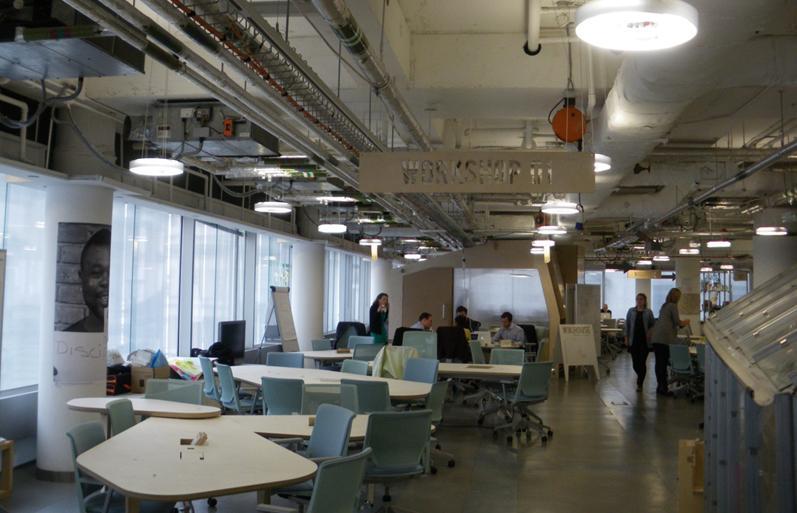
In terms of space application, openness and versatility are the most important elements. Hub Westminster has designed various work areas for people who only need to spend a couple of hours here daily to people who need the space whole day or for individuals who only work at night. Consideration is also given to small teams that need to meet with different organizations, or those who need one on one meeting with their clients within short notice, or people requiring a complete space to interact closely with their entrepreneurial partners. Everyone can find spaces here to suit their needs.
The area also features public area design layouts such as the kitchen, conference room, reading area and event venue, etc.
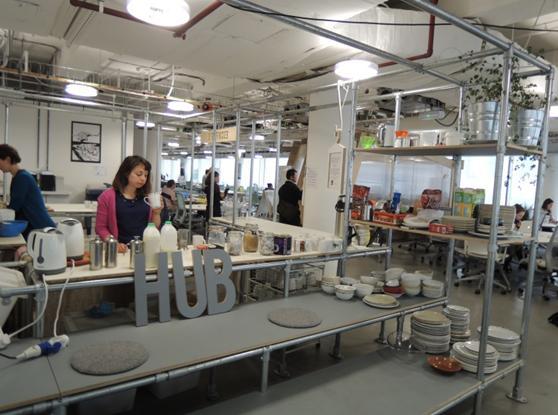
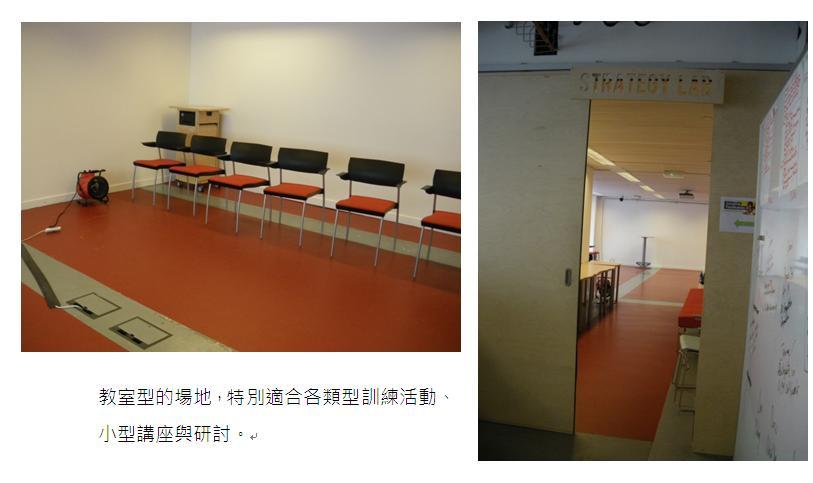
Classroom styled rooms are suited for training and small lectures.
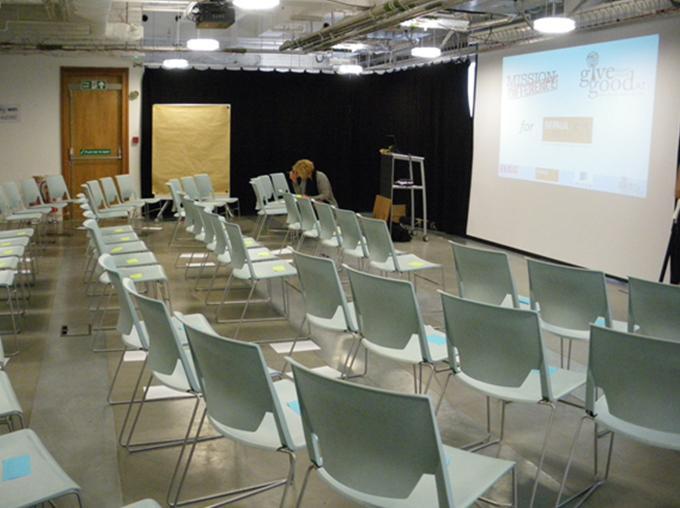
Office furniture
In relation to office furniture, besides some fixed long tables, emphasis is placed on versatility and user-friendliness, including:
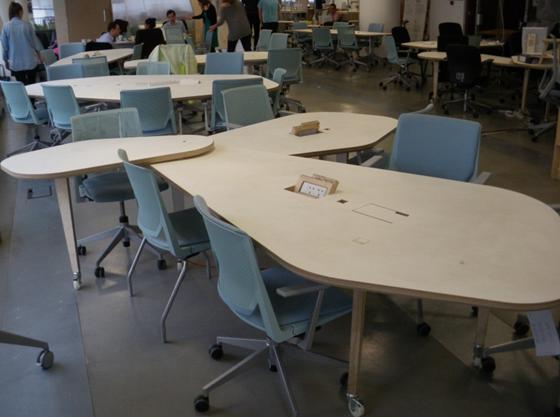
- Many office desks feature 135-degree corners that are usually roundish. According to Alice, such design brings the colleagues closer to one another to facilitate eye contact during discussion. Further, when they stand up to hug or shake hands with each other they do not have to worry about clothes being caught by the table corners.
- The movable table stand has wheels for convenient assembly, moving or to secure it temporarily, so that the tables can be flexibly arranged depending on the need of various teams or activities. The size and weight have been carefully considered so that even dainty ladies can operate it independently, thereby significantly decreasing the burden of the management team as well as the need for permanent staff and cost at Hub Westminster.
- Some cabinets and whiteboards are also movable. Compared to fixed office furniture, modular office furniture allows for more versatile use of space. No designs are patented, so everyone is welcome to replicate, use or share. Sharing is an important concept in Hub, and the Hub management model has been shared globally on the TED Talk platform.
Management
As a co-working space valuing innovation and influence, The Hub Westminster’s attention to detail in relation to software and ambiance is certainly comparable to its furniture or spatial design.
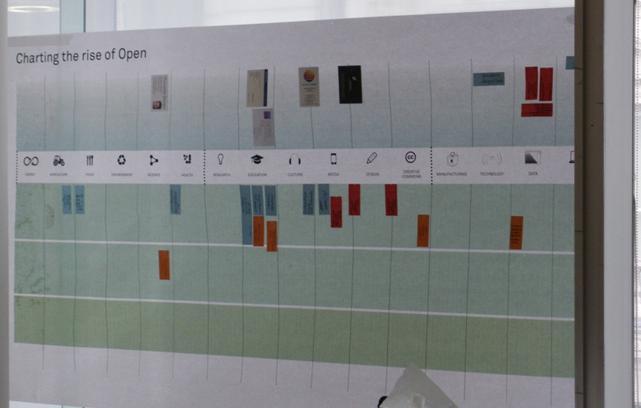
Hub for…?

The Hub is not a traditional incubation center, it is more like a community (or perhaps more fashionably, a settlement) where a group of like-minded people (who value social responsibilities) with different expertise and backgrounds aim to minimize the barrier to entry of entrepreneurship through the concept of sharing economy. The barriers to entry of entrepreneurship are multifaceted, including the sharing of hardware, facilities or space to reduce the cost of rent as an independent entrepreneurship team. Furthermore, the settlement allows professionals from various fields to form teams or support one another, thereby decreasing the cost of searching (they work in the same space after all). In addition, the entrepreneur team settlement attracts investors focused on particular agendas or professional consulting teams to facilitate the obtainment of resources. Because of sharing, the co-working space is transformed into almost like a “home for entrepreneurship teams”. Some of the more seasoned teams are even reluctant to move out and become independent!
The Hub Singapore’s founder Grace Sai describes their Hub as “You attract who you are.” In order to manage a Hub, you need to become an innovator in order to attract similar talents and collaborative partners, and people who come to the Hub will ultimately become the embodiment of every entrepreneur’s aspirations. Simple yet impressive, the Hub is more than just a Hub, wouldn’t you agree?

This work is licensed under a Creative Commons Attribution-NoDerivatives 4.0 International License.
Please attribute this article to “Workforce Development Agency, Ministry Of Labor”.
